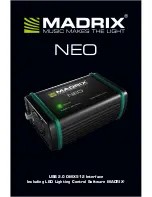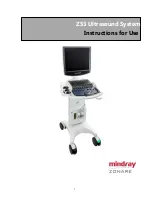
27
English
Attach the sensor by wrapping the tape or sensor wrap over the
sensor assembly snugly, but not so tight as to restrict blood
flow. For best results, secure cable independently from the
sensor, preferably around patient's ankle or lower leg.
Make
sure the tape securing the cable does not restrict blood flow.
Figure XIII: Neonatal Flex Sensor on foot.
D. Ear Clip and Reflectance Sensors
CAUTION
•
The Ear Clip and Reflectance sensors
are not recommended for pediatric or
neonatal use. The accuracy of these
sensors has not been established for
pediatric or neonatal use.
NOTE:
Reflectance
and
Ear Clip
sensors generally
do not perform as well as sensors located on
the fingers or toes. They are not recommended
for applications where the best possible SpO
2
accuracy is important.
1. Ear Clip Sensor
The Ear Clip Sensor is designed for adults where fingertip
monitoring is impractical.
Rub the ear lobe vigorously for 5
seconds and then apply the Ear Clip Sensor to the lobe of the
ear. Make sure the Ear Clip Sensor is positioned so the LED
emitter and detector are completely covered by the earlobe.
This ensures no stray light bypasses the earlobe, which can
lead to SpO
2
inaccuracies.
Figure XIV: Ear Clip Sensor.
Summary of Contents for 920
Page 1: ...English Instruction and Service Manual Models 920 and 920M Hand Held Pulse Oximeters ...
Page 2: ......
Page 4: ...iv ...
Page 8: ...viii ...
















































